
The Maurice Farman MF.7 Longhorn is a French biplane developed before World War I which was used for reconnaissance by both the French and British air services in the early stages of the war before being relegated to service as a trainer.
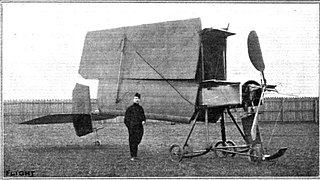
The Breguet Type III was an early biplane built by Louis Bréguet in France in 1910.

The Bréguet 390T, 392T and 393T were a family of French propeller-driven sesquiplane airliners designed and produced by the French aircraft manufacturer Bréguet.
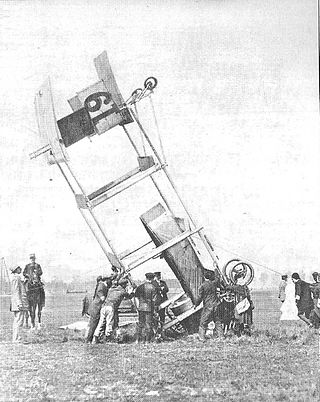
The Breguet Type I was an experimental aircraft built in France in 1909. It was Louis Bréguet's first fixed-wing aircraft design. Breguet had previously had some success with two helicopter designs, one of which had been exhibited at the Paris Aero Salon in December 1908. Because of these machines, the Type I was at first known as the Breguet Type III.

The ASL Viking was a single-engined two seater biplane aircraft designed and built by Horatio Barber's Aeronautical Syndicate Ltd. at Hendon. It was first flown in January 1912.
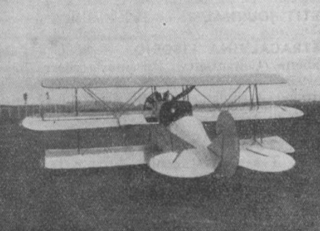
The Caproni-Pensuti 2 was a small single-engine sports triplane aircraft designed and built in Italy just before the end of World War I. It had a wingspan of only 4.0 m or a little over 13 ft.

The Voisin Type de Course was an early French aircraft built by Voisin Frères. It was first flown early in 1910.

The Paulhan biplane was a French experimental aircraft designed in 1910 by the successful aviator Louis Paulhan in collaboration with Henri Fabre. The prototype became the second aircraft bought by the British War Office: two further examples, differing in constructional detail, were built.
The Voisin Type Bordeaux was an aircraft built by Voisin Frères in 1910, so named because it was used by Juan Bielovucic to make a record-breaking flight from Paris to Bordeaux in France. The design differed significantly from previous Voisin designs in eliminating the forward-mounted elevator.
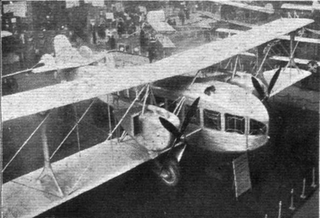
The Bréguet Leviathan was a family of large all-metal biplane aircraft built in France in the early 1920s. The Bréguet XX and XXI were notable for being powered by Bréguet-Bugatti multiple engines, in two forms. The Bréguet XXI was powered by individual Bréguet-Bugatti U.16 engines initially and Lorraine-Dietrich 8b engines in tandem later. The Bréguet XXII had accommodation for about twenty passengers and was destroyed during a 1923 transport aircraft competition. Development of all three aircraft types was halted largely due to technical issues with power-plants and aircraft structure.
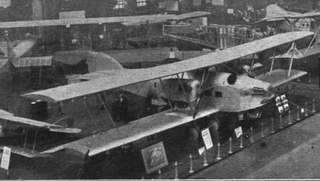
The Potez XVIII was a French airliner from the early 1920s, a three-engine biplane carrying up to twelve passengers.
The Potez 26 was a single seat fighter aircraft designed and flown in France in the mid-1920s. It did not reach production.
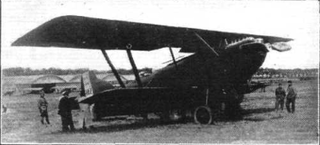
The Potez 28 was a French aircraft designed in the 1920s to set distance records, built in both sesquiplane and monoplane versions. Only two were completed but both set several long distance records.

The Caudron Type O was a French single seat air racing biplane first flown in 1914.

The Caudron Type L was a two-seat French pusher configuration amphibious biplane, flown around 1913 and intended for naval use.
The Caudron Type B Multiplace was a large French biplane designed to carry up to five passengers in a cross-country time trial of 1912. It was destroyed early in the event.

The Villiers IV or Villiers 4 was a French two seat naval floatplane. Two were built, the first with twin floats and the second with one. The first was short-lived but the second set several world and national records; it later became the Villiers XI.
The Latham Trimotor was a large French trimotor biplane built just after World War I and used in small numbers by the French Navy.
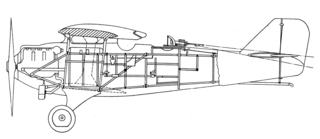
The Bréguet 25 or XXV was a French two seat fighter from 1925. It was heavily armed, carrying seven machine guns.
Kawanishi's first aircraft, the Kawanishi K-1, was designed as a mail carrier. It was the first Japanese aircraft to receive a Certificate of Airworthiness from the Aviation Bureau. It won a prize in a national contest but was not a commercial success and only one was built.















